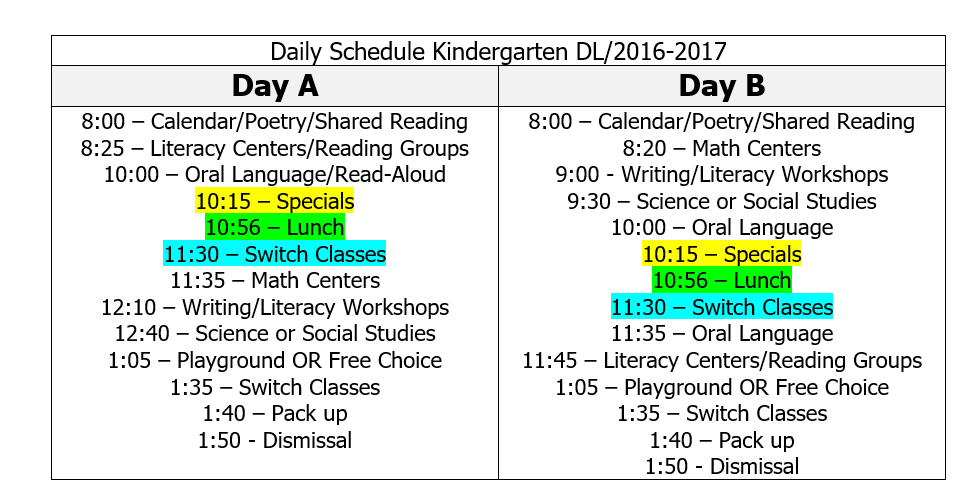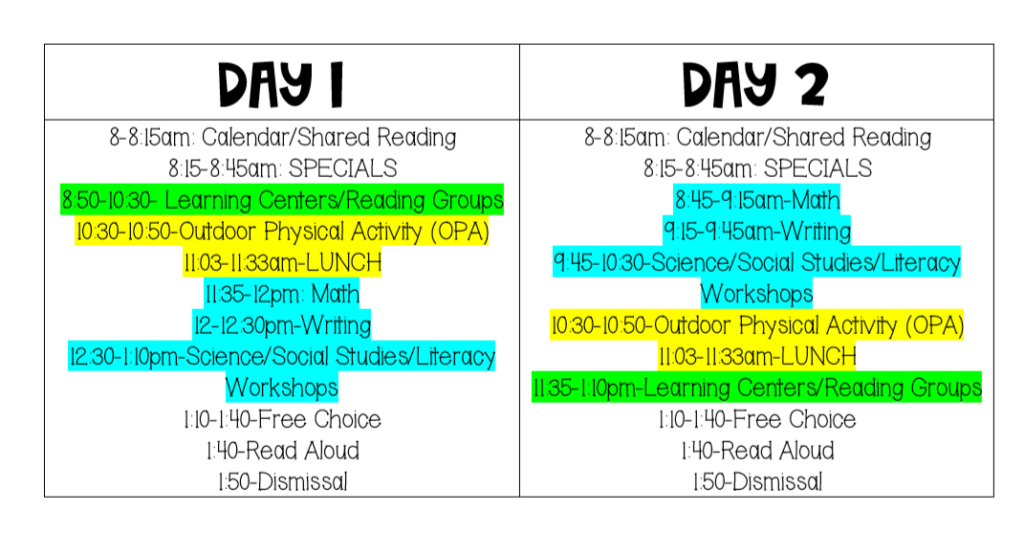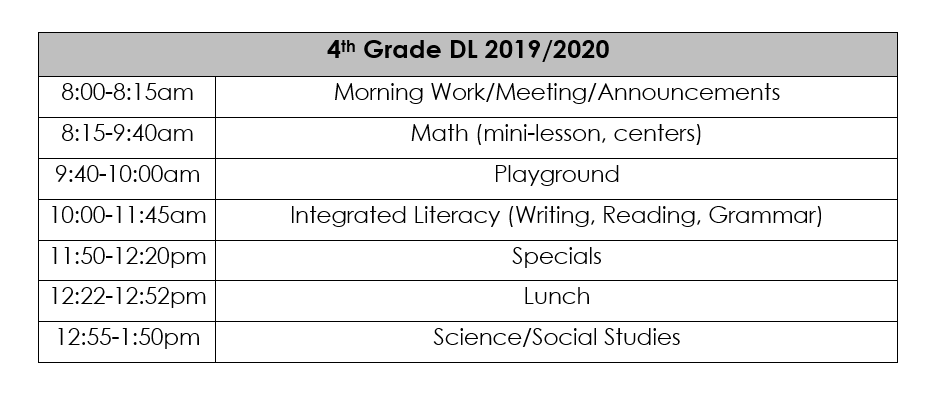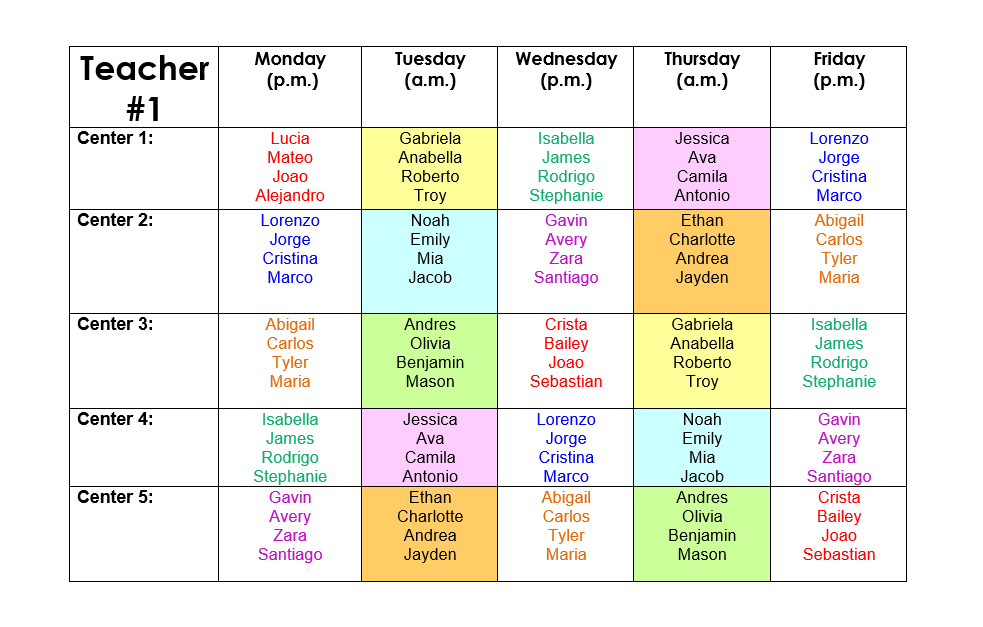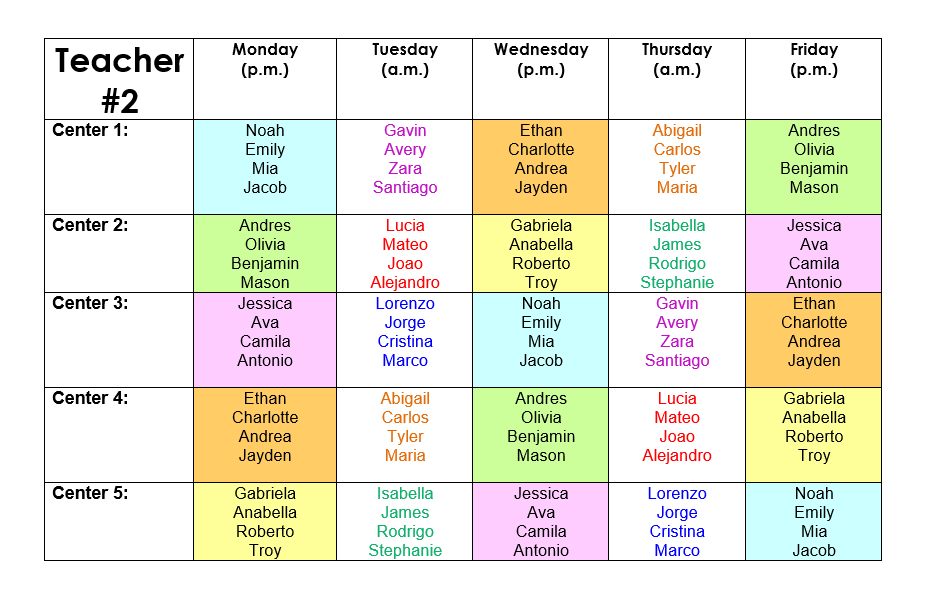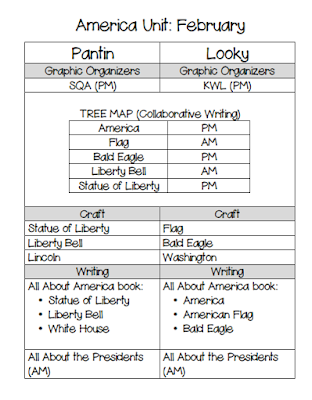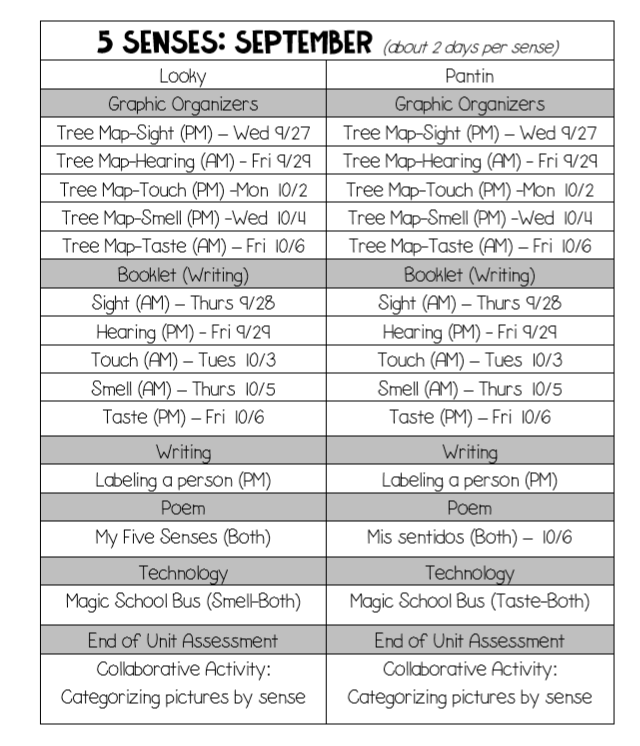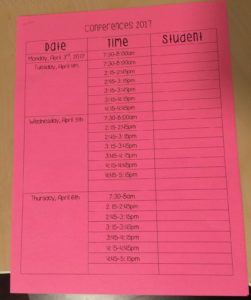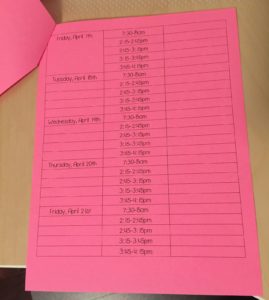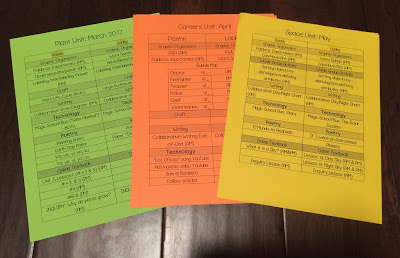
An extremely important part of any successful dual language program is…organization! And for us that has meant schedules upon schedules upon charts and more charts! For teachers in dual language programs there are several different things you have to consider before making curriculum-oriented decisions. If you teach two groups of students, you have to consider: the language allocation plan (daily split, weekly split, roller coaster model?), how your literacy rotations will look like for both groups throughout the week, how your math rotations will look like for both groups, which teacher is teaching what for a specific unit and when (for side-by-side models) and so much more.
First, we create a rough “daily” schedule of how our day/days will look like. For Kindergarten we created a sort of block schedule with a Day A and a Day B. The idea is that you and your partner teacher are both following the same Day schedule. So, for example:
Monday: Day A; Tuesday: Day B; Wednesday: Day A; Thursday: Day B; Friday: Day A
Monday: Day B; Tuesday: Day A; Wednesday: Day B; Thursday: Day A; Friday: Day B
This format that we followed also meant that we started with the same group of students each morning (our “homeroom”) and that we always switched after lunch to our other group of students. For the early grades (K-1st especially), it is important for the students to be receiving daily instruction in both languages. This means that switching halfway through the day is the most optimal scheduling way to achieve this. This block schedule also allowed for us to make sure we weren’t repeating any content or lessons but rather have a fluidity amongst the two classrooms.
Basically, let’s say DAY A is on Monday, then both myself and my partner would be doing Calendar/Poetry/Shared Reading, and our Literacy Centers/Reading Groups at the same time, just with our own respective group of students. THEN, that same day, we would switch groups of students after lunch and we would both then doing Math Centers, Writing/Literacy Workshops and our Science or Social Studies lesson with our afternoon group of kids! Then, on Tuesday, we would both follow the DAY B schedule (which is basically Day A, flipped – which assures then that our ‘homeroom’ group of students is getting their Math, Writing, Science/Social Studies in the other language and your afternoon group of kids is getting their Calendar/Poetry/Shared reading and Literacy Centers/Reading Groups in the other language). An example of our schedule is:
Yes, this means that my partner and I would have to be very much in sync and work closely together to make sure we were both on schedule.
Now for our 4th grade schedule my partner and I decided that it was better to have a full day with each group of students because the content and curriculum in the upper grades required longer periods of time. So our schedule is more “simple” but that by no way means it is any less intense! We are nonstop all day making sure we make the best of the the day we have with the kids.
Here is the rough schedule we followed:
In addition, for our math curriculum, we teach our math chapters utilizing Math Centers, so we have a whole separate chart for that. At the beginning of the unit, we rip the chapters out and send them home so students can work/practice at home with their parents and that way, the parents know the vocabulary we are using in class and they can also see what their child is learning in school!
Basically, we decided that we would teach 5 centers at a time for the math skill we were working on, meaning, that both my partner and I would have the same math centers happening in each of our rooms, but we have students go to ONE center per day in one language and then the next day they go to the next center in the other language, and so forth. Basically, each group will get, out of those 5 centers, 2 in Spanish and 3 in English OR 3 in Spanish and 2 in English. Here is a sample of one of our math charts:
As you can see, the children move to the next center the next day, just in the OTHER language. For example, imagine Group 1… This will be Group 1’s rotation through the math centers for that skill/chapter:
Monday: CENTER 1 – English
Tuesday: CENTER 2 – Spanish
Wednesday: CENTER 3 – English
Thursday: CENTER 4 – Spanish
Friday: CENTER 5 – English
This way, they are all receiving all of the math skills, just half of the time they are receiving them in Spanish and the other half in English. We also run our classrooms this way to ensure that we are being as efficient as possible with the time that we have with each group (we really only have about 2 hours with each group) AND to ensure that we aren’t repeating any content!
Finally, we have our VERY important thematic unit charts! For Kindergarten, we teach our standards through thematic units and for each thematic unit we created a Unit Chart where we specify what graphic organizers, writing activities, collaborative group activities, technology (videos, songs) and poetry we will be doing with which group of students and in which language! For this purpose, we call our morning group of kids our AM group and our afternoon group of kids our PM group and I am “Pantin” (the Spanish side) and my partner is “Looky” (the English side). Here is a sample of one of our unit charts:
Finally, my partner and I do all 40 conferences together, since we are both teachers to all 40 of our kids! Therefore, when conference time comes around, we create this chart designating the time slots for our parents to sign in and then our Room Parent puts these dates and times on the class Sign-Up Genius (https://www.signupgenius.com/). Once all the parents have signed up, we write in each parent’s/student’s name on the box next to the time and we have this handy throughout our conferences so we are on-task with which parent is next and the order of our conferences! This is another great and simple tool we’ve employed to help us stay super organized!
I’m including this resource from the Center for Applied Linguistics to reference when thinking about your dual language program’s organization and structure:
